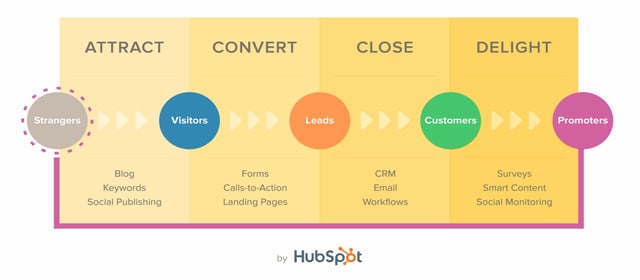Timing is everything….wouldn’t you agree? Customers no longer want to be “sold” to — and that’s a fact.
Here’s the good news: when it comes to increasing logistics sales, it’s a matter of creating content that speaks to the “pain points” of your target customers in order to bring visitors that are looking for your services to your website. The best way to get in front of today’s buyer is to create content that’s educational and answers their search for a valuable 3PL provider that can be the solution to the challenges they’re currently facing.
This educational content can appear in various forms, such as in blogs, infographics, videos, podcasts, presentations and e-books. When properly optimized, these content assets do the work for you by showing up in search results when prospective customers have a need. Once these content assets are in place, you can continue to go about your day-to-day sales process as your website works on your behalf.
Be There for Your Customers When They Need Your Services
By publishing the right content in the right place, at the right time, your marketing becomes relevant to help your customers just when they need it. With inbound marketing, buyers are buying from you, they are not being sold to at an inconvenient time. Buyers have unique problems. Sure, their main issue may be that they need to find a 3PL provider. But beyond that — their product, their budget, etc. — everything is unique.
Inbound marketing accounts for where people are in your business’ buying cycle — whether they’re just doing research, or they’re ready to buy. It allows them to choose how much they want to interact with you, but at the same time allows them to see that your website can be a resource to them at any point in time.
Use Your Website to Build a Solid Sales Pipeline
Did you know that closing a sale and building a pipeline are two different skills? When logistics companies don’t use their website to pull prospects to them, they miss out on an entire audience of potential business. When logistics companies practice inbound marketing, they pull customers to them with content that prospective customers can find.
There are four phases in the inbound marketing methodology, as you can see in the graphic below.

1.) Customer Attraction Phase
This phase is all about increasing awareness that your company actually exists. Since studies show that a majority of people conduct a search online when they are looking for a new product or service, it’s imperative that your company is being found when potential customers execute these searches. The inbound marketing methodology puts your brand in front of prospects while they are looking for what you have to offer (not before or after). It’s a timely way to market your services.
2.) Customer Conversion Phase
This 2nd phase in the inbound methodology focuses on converting the leads that you’ve garnered in the first phase by creating forms and landing pages on your website where people can download interesting content that applies to where they are in the buying cycle — such as e-books or white papers.
The convert stage of the inbound methodology is where you start to see the rewards of all of your content marketing efforts. It’s where you acquire warm, qualified, inbound leads that you can pass along to your sales team.
3.) Customer Closing Phase
When leads reach this phase, they’re ready to be closed into customers. Your sales team should always have a good amount of information to work with before picking up the phone to speak with a potential customer.
4.) Customer Delight Phase
It’s very important to continue to communicate with and delight your customers long after a contract has been signed. Perhaps you’re a company that has enough customers, but needs to put content into place to continue to engage with these folks. Providing remarkable content at this phase helps you to upsell and to continue to work with them in the future. Some examples of delighting a customer include a newsletter, webinars or a dedicated blog that speaks specifically to your customer base.
In Conclusion: High-Value Logistics Services are Bought, Not Sold
Nowadays, high-value services are bought, they are not sold. Customers want to find you and gather information on their own before speaking with a sales rep.
You’re a logistics company that has information that potential customers want to know about. The only thing is that Google hasn’t found a way to index the information that can help your customers that resides in your brain… or in your e-mail account or what you share in your phone conversations [YET! ;)].
Stop withholding this information and get it onto your website so that it can work on your behalf. Once you make this information available online, the customers that are searching for you will be able to find you. After all, you are the one who has the answers. You simply need to make sure that you are front and center when a potential customer searches for you.


